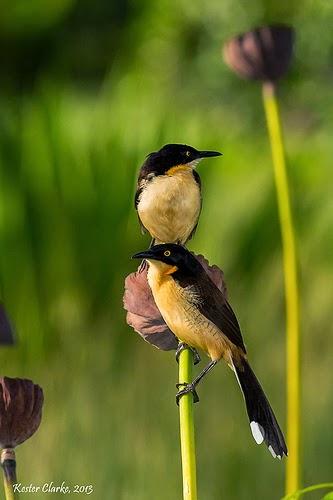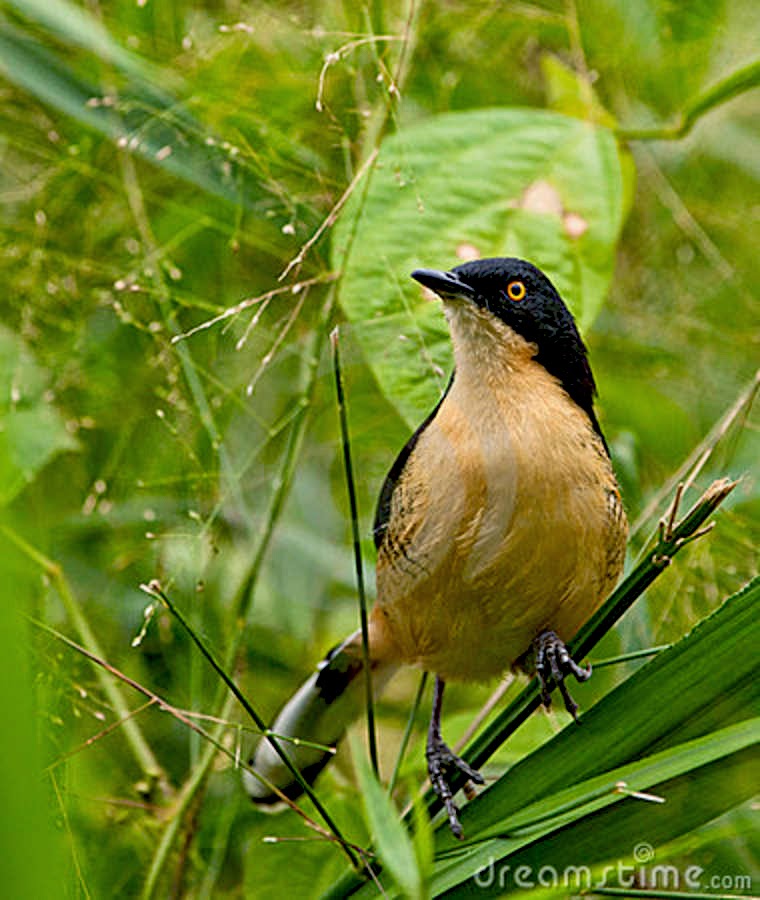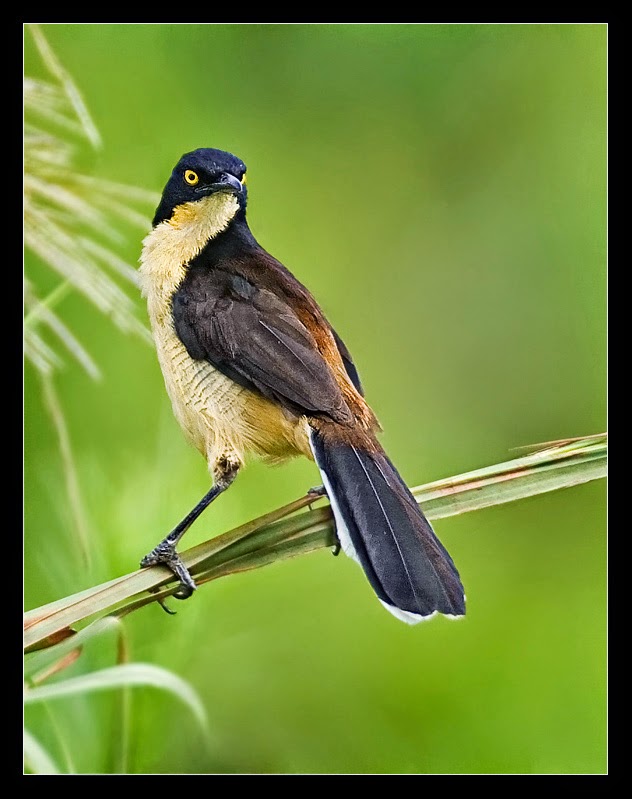Nanday Parakeet (Aratinga nenday) also known as the Black-hooded Parakeet
- Konura Czarnoglowa
Brazil, Pantanal, 2013
Description
Black beak with black head, face & chin mask, yellow or bare eye-ring. Blue-green wash on throat and upper breast. Dark blue outer flight feathers. Longest tail feather is olive green tipped in blue. Flight & tail feathers are gray underneath. Lower abdomen pale olive or yellow-green. Rump is yellow. Legs covered in striking red/orange feathers contrasting vividly against the greenish abdomen. These birds are strong, fast, direct fliers with rapid wing beats. The immature bird is similar to the adult but with less blue on the throat and breast and the tail is shorter then the adult.
Habitat
The bird is native to South America from southeast Bolivia to southwest Brazil, central Paraguay and northern Argentina, from the region known as the Pantanal. It lives in scrub forest and forest clearings, pastures and agricultural lands. Open palm forests. They are gregarious, with groups of up to a dozen birds when breeding and several hundred gathered when roosting. They are often seen drinking at waterholes.
Voice
Very loud repetitive screeching - kree-ah...kree-ah. Grating chatter when perched; in flight a piercing, high-pitched call followed by 3 or 4 much lower, abrupt klaak! calls. Known for being quite vocal, the can often be taught to speak rather well, learn tricks and mimic sounds, especially when started at a young age. However, the Nanday can also be quite loud and does best in a home where his owner doesn't mind a little extra noise.
Diet
The bird feeds on seeds, fruit, palm nuts, berries, flowers and buds. Feral birds will also come to bird feeders. Wild birds primarily use scrub forest and forest clearings around settlements. It frequents open savannah, pastures and stockyards in South America where it is considered a pest in some areas.
Reproduction
Nanday Parakeets usually find holes in trees to nest in. It lays 3–4 eggs. After raising its young, all birds will form rather large communal roosts until the next breeding season.
Typically nesting in late November.
Did you know?
In captivity they make wonderful pets if cared for and socialized properly. They all have distinct personalities and appreciate toys. They require a cage or enclosure that is a minimum of 24 × 24 × 30 inches (60 × 60 × 75 cm) as they are inclined to climb, flap their wings and have long tail feathers. They also like to be outside of their cage at least six hours a day. While they will accept most parrot seed mixes, seed-only diets are nutritionally inadequate, reduce their lifespan considerably and may cause them to become underweight. Pellet-based diets with fruits and vegetables offered daily are much preferable. These birds are extremely intelligent and skilled escape artists. Some of them will talk, others will not, depending on their personality. They are noted for having a very loud call and are not suited for apartments.
Perhaps one of the most unusual habits of this species is the tendency of falling asleep on his back with his feet straight up in the air.
Photos by others.















